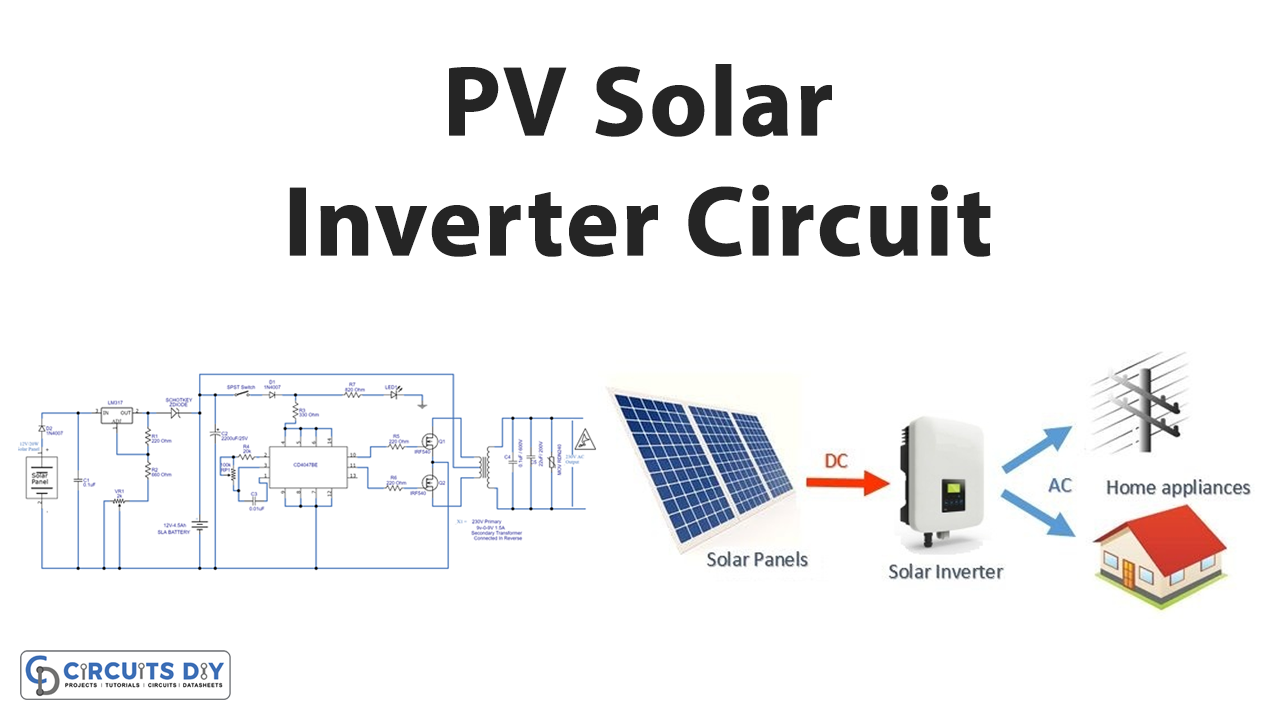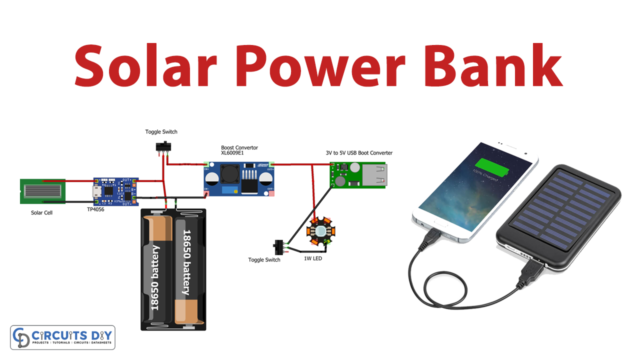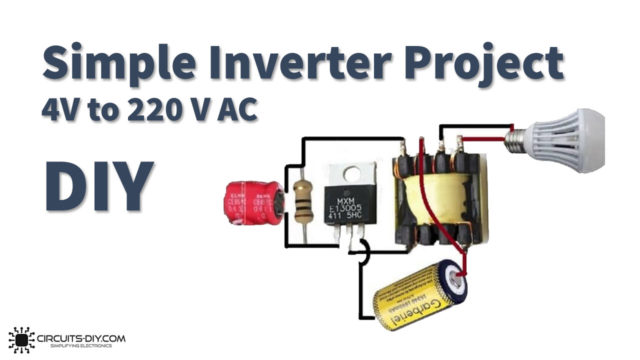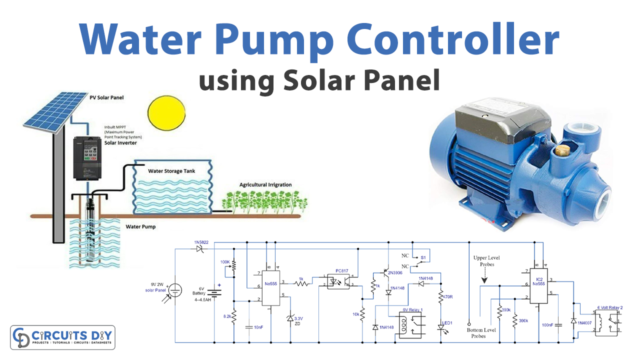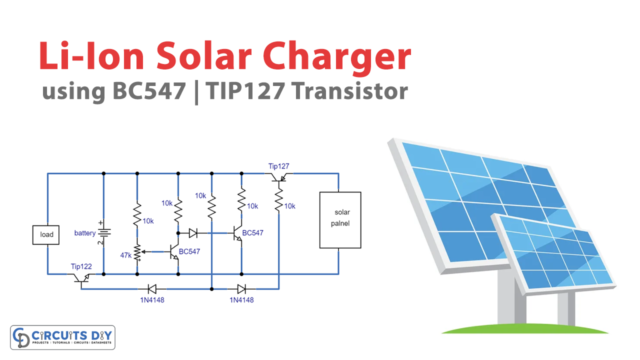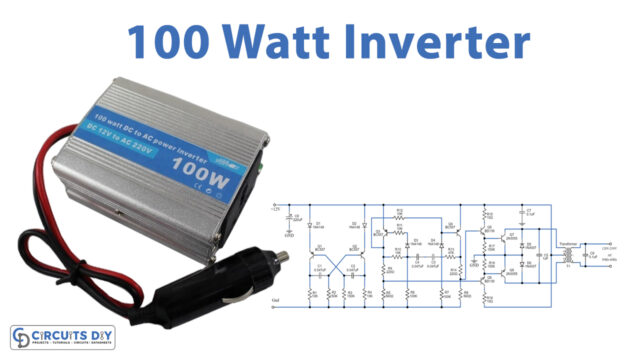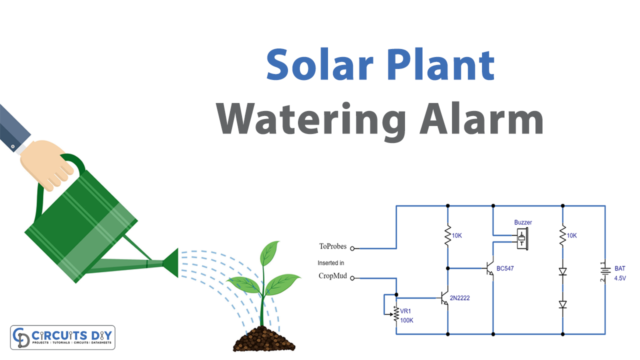In this tutorial, we are going to make a “PV Solar Inverter Circuit”. If you are thinking about why to use a solar inverter instead of the normal electric one, then it is because of the solar one. It uses solar energy which is available in abundance and is clean and pollution free. As solar energy has always helped in reducing global warming and the greenhouse effect. Also use of solar energy helps in saving money many people have started using solar-based devices. A Solar inverter is similar to a normal electric inverter but uses the energy of the Sun (solar energy).
It helps in converting the direct current into an alternate current with the help of solar power. Direct power is that power that runs in one direction inside the circuit and helps in supplying current when there is no electricity. And when there is no AC supply outlet, we couldn’t charge the inverter battery & get high voltage output. Here we design a Photovoltaic solar-based inverter circuit with easily available components, it can be encapsulated as a handheld inverter. In this circuit 12 Volt / 20 Watts solar panel is used to get input bias, it gives a peak of 12 volts at 1600 mA when exposed to the open Sun.
Hardware Required
| S.no | Component | Value | Qty |
|---|---|---|---|
| 1. | PV Solar Panel | 12V/20W | 1 |
| 2. | IC | LM317 | 1 |
| 3. | SCHOTTKY Diode | 3A/50V | 1 |
| 4. | SLA Battery | 12V/4.5Ah | 1 |
| 5. | Switch SPST | 1 | |
| 6. | Diode | 1N4007 | 2 |
| 7. | IC | CD4047 | 1 |
| 8. | Mosfet | IRF540 | 2 |
| 9. | Center Tapped Transformer230V Primary, 9V-0-9V / 1.5A Secondary Winding | – | 1 |
| 10. | MOV (Metal Oxide Varistor) | – | 1 |
| 11. | Resistor | 220Ω,680Ω,20kΩ,330Ω,820Ω | 21,1,1,1 |
| 12. | Capacitor | 0.1uf,2200uf/25V,0.01uf | 1,1,1 |
| 13. | LED | – | 1 |
| 14. | Connecting Wires | – | – |
| 15. | Varaible Resistor | 2kΩ,100kΩ | 1,1 |
Stages of PV Solar Power Inverter
A photovoltaic solar inverter circuit is constructed with five different stages.
- PV Solar panel
- Regulator / Battery charger
- Inverter Circuit (Switching Pulse Oscillator)
- Switching Device
- Step Up Transformer (Output stage)
PV Solar Panel

Photovoltaic cells attract energy from Sun and convert it into a clean form of electricity. These cells consist of positive and negative silicon that is placed underneath a slice of glass. When the protons of the Sunlight hit the PV cells they knock out the neutrons present in the silicon. Now the negatively charged neutrons get attracted to the silicon but then are held inside a magnetic field. The wires attached to the silicon catch hold of these neutrons and while connecting to the circuit, the current is formed. Then for converting DC into AC an inverter is used so that the house appliances can run.
Regulator / Battery Charger
Positive voltage regulator IC LM317 is used here, which gives an output voltage range from 1.25 V to 37 V with more than a 1.5A current rating. The output from the regulator is given to a 12/4.5Ah SLA Battery, this Battery provides DC bias to the inverter circuit. The output voltage (Vout) of regulator LM317 can be obtained from this formula.

R2 => R2+VR1 for the given inverter circuit.
Inverter Circuit using IC CD4047
IC CD4047 is configured as a monostable / Astable multivibrator to produce a switching pulse. This IC is available in 14 pins dual line package, it works at low power. Here this IC provides full Oscillation at Pin 13 output (F), 1/2 of oscillation at Pin 10 as (Q), and Pin 11 as (Q’). Each output pin gives a 50% duty cycle.

Here:
R => R4+VR2
C=> C3.
By using this formula we can obtain frequency output at pin 13. For pins 10 and 11, the formula changes as
f=1/4.4RC.
MOSFET Drivers
As a switching driver for this inverter circuit, IRF540 N channel power MOSFET from Vishay silicon mix is used. That gives fast switching and has high operating temperature characteristics (175ºC).
Output Stage
The most important stage of a solar inverter is the output stage. Here secondary winding center tapped transformer X1 is used in reverse with specifications as 230V primary, 9V-0-9V / 1.5A. And MOV (Metal Oxide Varistor) is connected at an output to protect the electronic devices. The solar panel output voltage is directly fed into the regulator circuit, which is adjusted to give 12-volt output. And the battery is connected to this bias through a (3A, 50V) Schottky diode.
Circuit Diagram
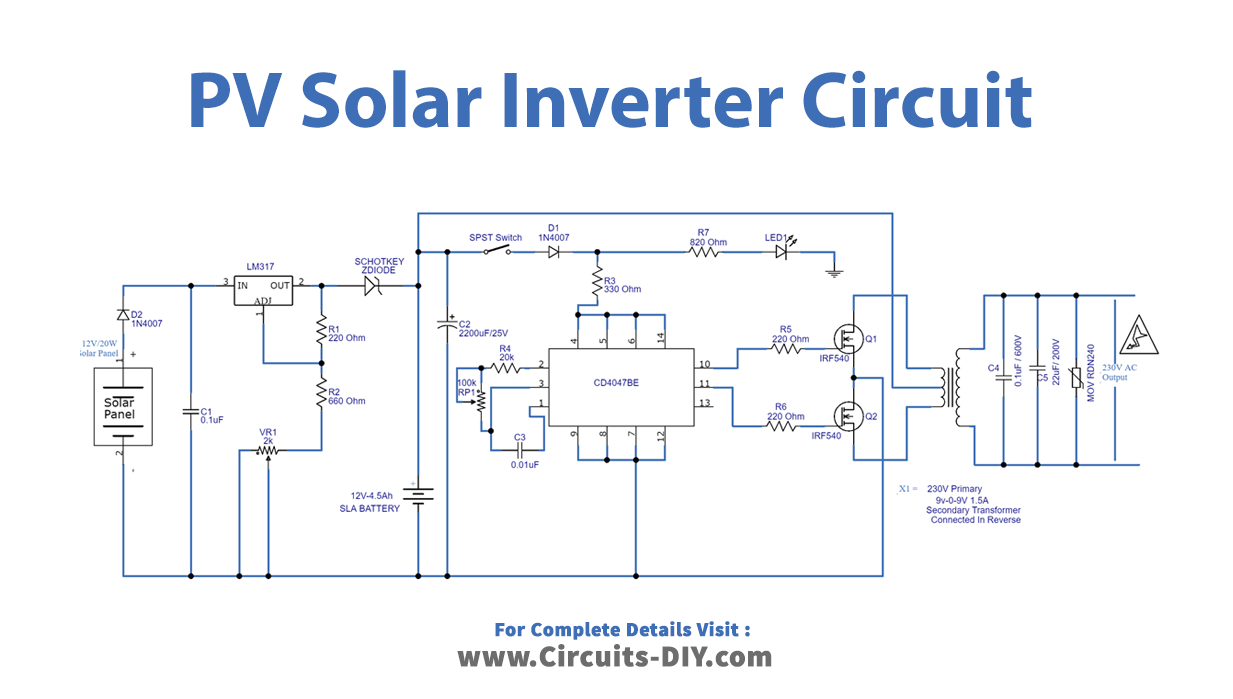
Working Explanation
Now the CD4047 IC is connected and configured as an Astable multivibrator, this circuit starts oscillating when we turn ON the SPST switch. Here output Q and Q’ are directly fed into switching power MOSFET IRF540, and drive X1 transformer secondary winding. The current flow occurs particular duration and not for a particular duration. So varying electromagnet is induced and the primary winding coil produces EMF, hence we get Alternating current output. Output voltage/frequency get varied, depending on the count of winding and switching frequency.
Application
Nowadays, most people use solar inverters at home. It comes to the rescue of those who have always gotten irritated when there is a power cut. It can be used for running lights, televisions, motors, etc.

